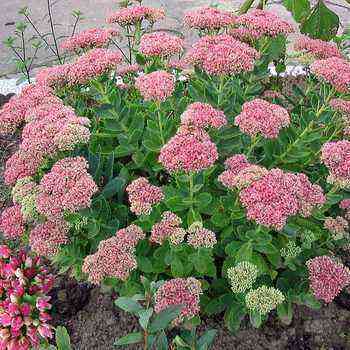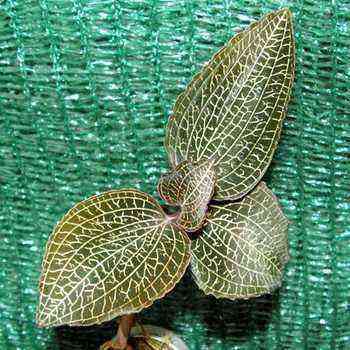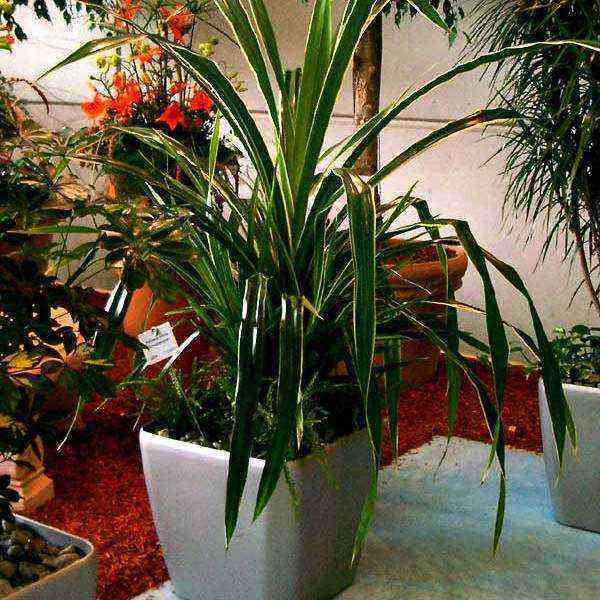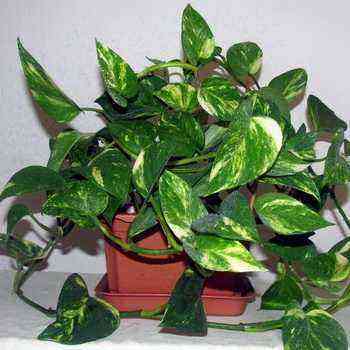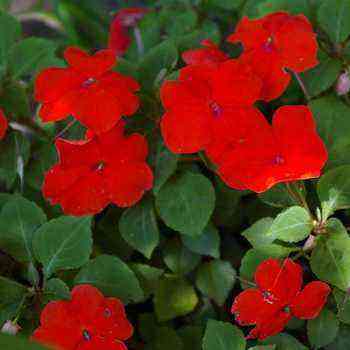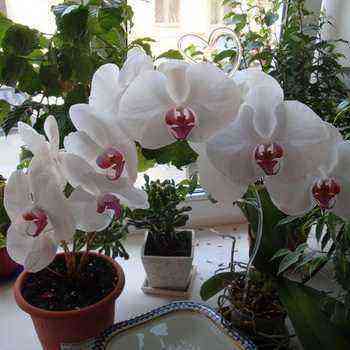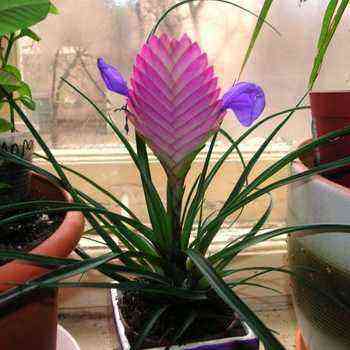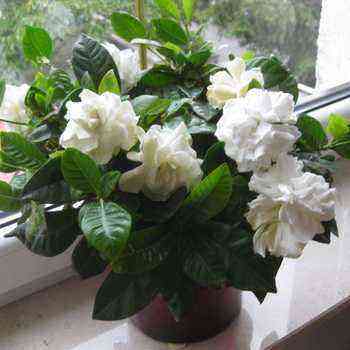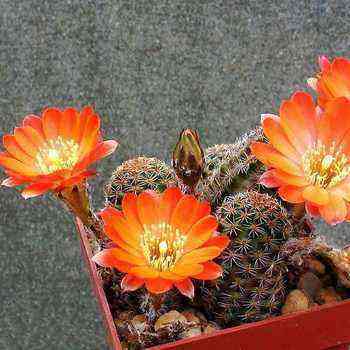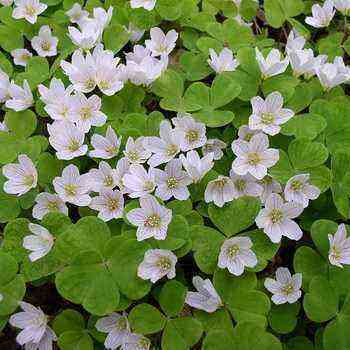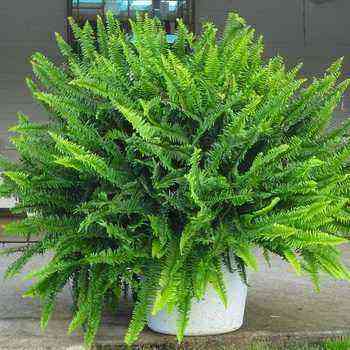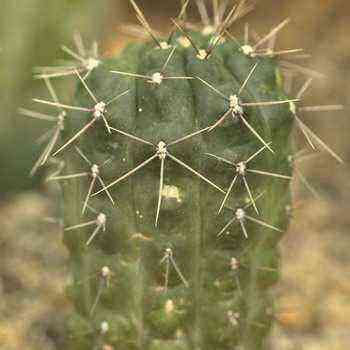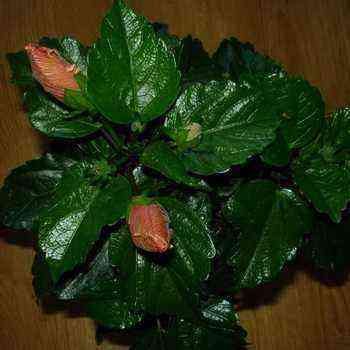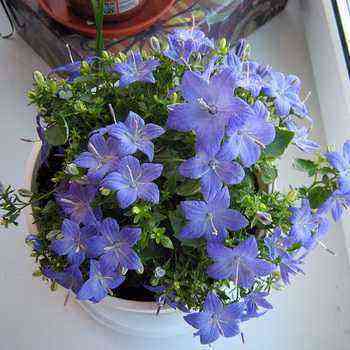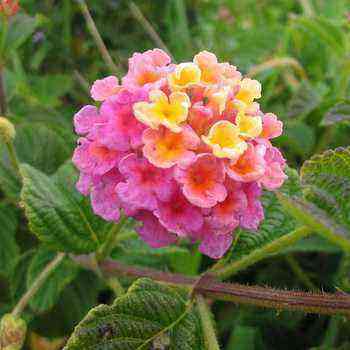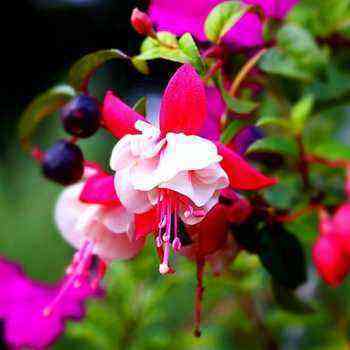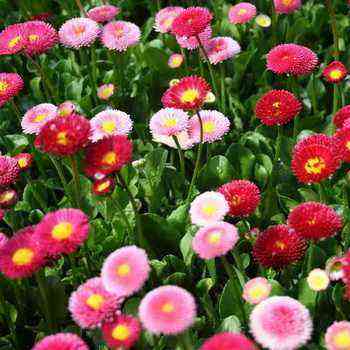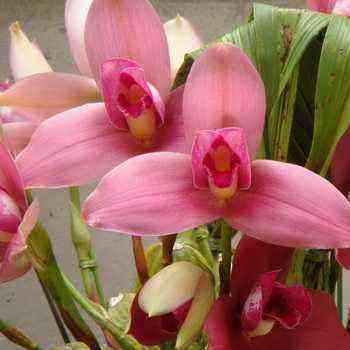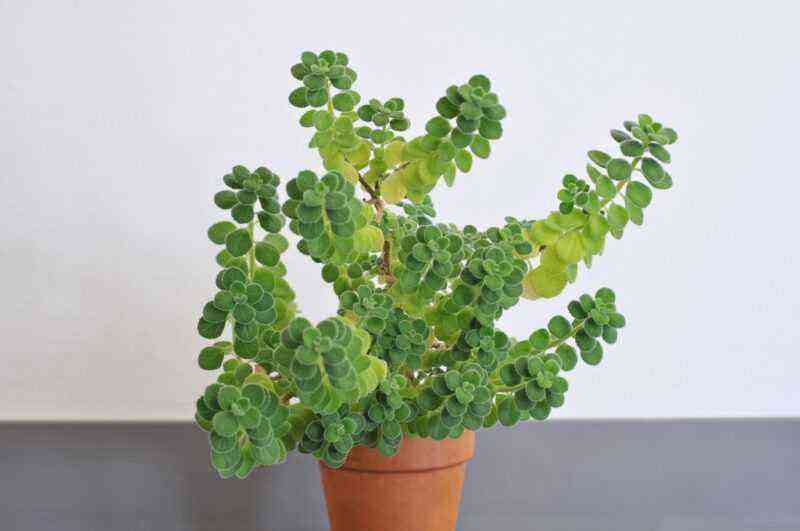 Miltoniopsis orchids were singled out as a separate genus at the end of the XNUMXth century, while earlier they were attributed to the miltonium genus. The miltassia orchid is an intergeneric hybrid – it was obtained by crossing miltonia with brassia. All these plants have external similarities, therefore, they are considered in one section. Despite the similarity, the care and maintenance of miltonia is different from caring for miltoniopisos and miltassia at home, so you should not apply the same growing methods to these plants.
Miltoniopsis orchids were singled out as a separate genus at the end of the XNUMXth century, while earlier they were attributed to the miltonium genus. The miltassia orchid is an intergeneric hybrid – it was obtained by crossing miltonia with brassia. All these plants have external similarities, therefore, they are considered in one section. Despite the similarity, the care and maintenance of miltonia is different from caring for miltoniopisos and miltassia at home, so you should not apply the same growing methods to these plants.
Orchid flower Miltonia
The genus of orchids Miltonia (MILTONIA) includes about 20 species of flowering orchids, growing naturally in South America, epiphytic or epilithic. Miltonia blooms, lasts 3-4 weeks, but it is not worth cutting: its beautiful flowers fade within a few hours.
Miltonia snow-white (Miltonia candida) is a plant that blooms with large, up to 9 cm in diameter, flowers, collected in 3-5 pieces. The species owes its name to the snow-white lip.

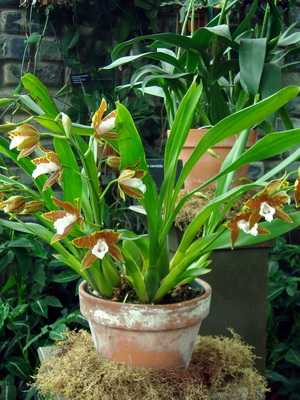
Pay attention to the photo of the snow-white miltonia orchid – at the base of the lip there is a light purple spot and three short keels. Blooms in autumn.
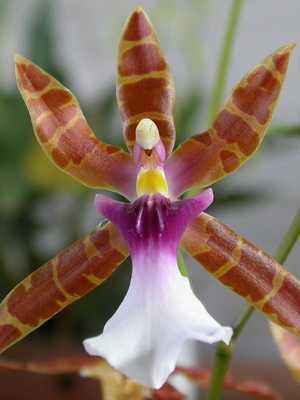

A species similar to the previous one – Miltonia clowesil has a 7-10-flowered inflorescence, up to 45 cm long. The flowers are yellow with chestnut-brown stripes, the lip in the lower part is purple-purple, in the upper part it is white.
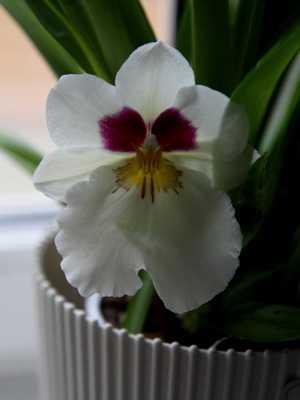
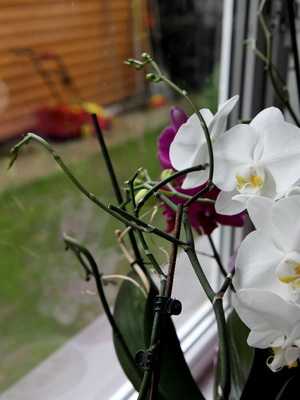
Miltonia Varshevich (Miltonia wascewiezii) differs in large paniculate inflorescences. Sepals and petals are brownish-red with a yellow or white top, with a strongly wavy edge. The lip is flat, wide, pink-purple, red-brown in the center, white along the edge. Blooms in February-March.
Miltonia orchids with their wide-open flowers are similar to pansies, so they have another name – “pansies”. The genus is named after one of the earliest collectors of orchids, namely in honor of the Englishman Adligen Milton.
Care, maintenance and transplantation of Miltonia orchids
Miltonia flower is one of the easiest to grow orchids. It requires a bright, but not sunny place to place it. For the normal development of the miltonia orchid at home, 10-15 hours of bright light a day is needed. In winter, natural lighting is supplemented with artificial lighting using fluorescent lamps. The air temperature in summer is + 20 … + 22 ° C, in winter – +17 +20 ° C. Nighttime temperatures should be 3-4 ° C lower. When caring for the miltonia orchid at home, from the moment the shoots form, the flower is watered abundantly and fertilizing is applied every two weeks.
Watering must be done very carefully, since pseudobulbs easily rot from waterlogging. Enhanced fertilization works in the same way. The plant is not sprayed. However, when caring for the miltonia orchid, one should not forget that these plants need high air humidity, about 80%, therefore it is recommended to keep in a room greenhouse. Many modern hybrids are content with relatively low air humidity.
The miltonia orchid is transplanted in the spring, immediately after flowering, every 3-4 years into a mixture consisting of bark, peat and fern rhizomes (2: 1: 1). Miltonia is propagated by dividing pseudobulbs when transplanting in the spring.
Miltoniopsis orchid care home care
The English botanist John Lindley described the genus Miltonia in 1837. The type species was the Brazilian orchid Miltonia spectabilis, discovered in subsequent years, similar species, including those currently belonging to the genus Miltoniopsis, were included in the genus Miltonia. However, in 1889, Alexander Godefroy-Leboeuf established that the Colombian species of Miltonia are morphologically different from the species of Brazilian origin and separated them into an independent genus Miltoniopsis. The Greek word opsis – “like” just emphasizes their similarity with the genus Miltonia.
Confusion in the classification of Miltonia and Miltoniopsis is constantly present on store shelves, since almost all plants sold with the Miltonia tag are in fact hybrid Miltoniopsis. The first intrageneric hybrid Miltonia Bleuana (Miltoniopsis (Miltonia) vexillaria x Miltoniopsis (Miltonia) roezlii) was registered in 1889.
Since then, over 2000 Milnoniopsis Greeks have been recorded, mostly under the generic name Miltonia.
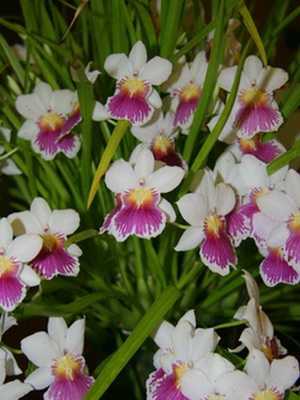
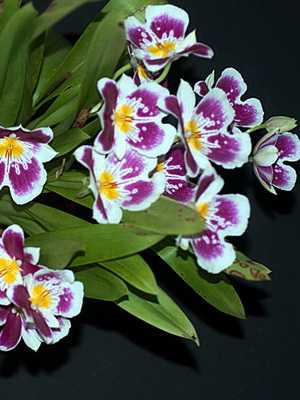
Miltoniopsis phalaenopsis, or moth (Miltoniopsis phalaenopsis) – in this orchid, the flowers are shaped like pansies. They are white with red and yellow patterns, relatively small (up to 5 cm). Blooms in July – October.
The species needs bright diffused light, good ventilation, a slightly lower temperature throughout the year and in the winter dormant period.

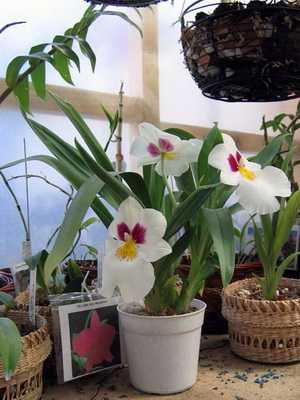
Miltoniopsis Retzla (Miltoniopsis roezlii) – an orchid with 2-5 fragrant white flowers with a lilac-lilac spot at the base of each petal and an orange disc at the base of the lip.

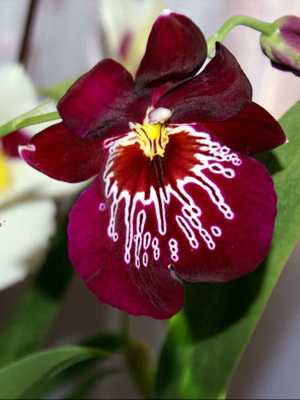
Miltoniopsis is a sympodial, epiphytic orchid of cool to moderate content. Most of the plants sold in stores bloom in summer, which complicates their cultivation somewhat: in summer these orchids must be kept at a low temperature of + 10 … + 16 ° C, in winter – at a temperature of + 18 … + 20 ° C. They prefer partial shade on the eastern or relatively light northern windows. Watering the plants is carried out only in the morning; in the intervals between waterings, the substrate should dry out well.
When caring for miltoniopsis, the required air humidity (80-90%) is maintained without spraying, which is not recommended for this species.
They are transplanted into pots, into a mixture of bark, peat, pieces of polystyrene (3: 1: 1) with the addition of a small amount of sand and dolomite flour.
Maintenance of the Miltassia orchid (MILTASSIA)
Miltassia orchid (MILTASSIA) is an intergeneric hybrid obtained by crossing Miltonia and Brassia (Miltonia x Brassia) – miltassia is a sympodial, epiphytic orchid of moderate content.
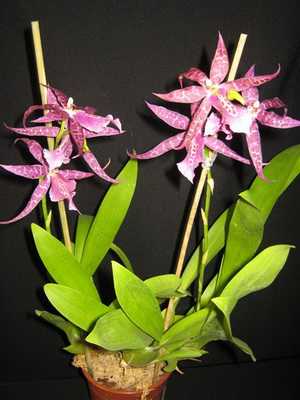
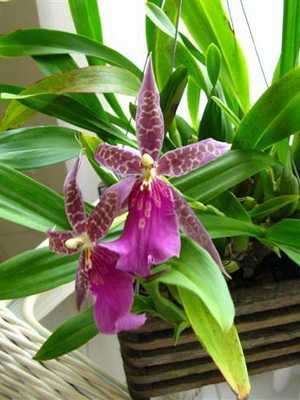
As you can see in the photo, Miltassia is a plant with rather large star-shaped flowers with a spectacular bright color. Blooms in autumn.
This orchid needs bright lighting, it tolerates the direct rays of the sun well. Miltassia is a moderate temperature orchid. The optimal daytime temperature for miltassia is +18 .. + 24 ° C, the night temperature should be about 4 ° C lower.
It develops successfully when the air humidity is about 50%. However, if the temperature of the content exceeds +23 ° C, the air humidity must be increased. During active growth, the plant is watered abundantly, when new bulbs mature and until the peduncles appear, watering is replaced by spraying the substrate every 3 weeks, then watering is resumed. They are transplanted into pots, into a bark-based substrate.

